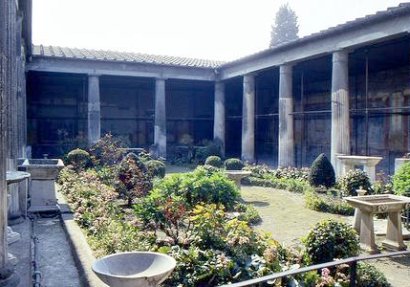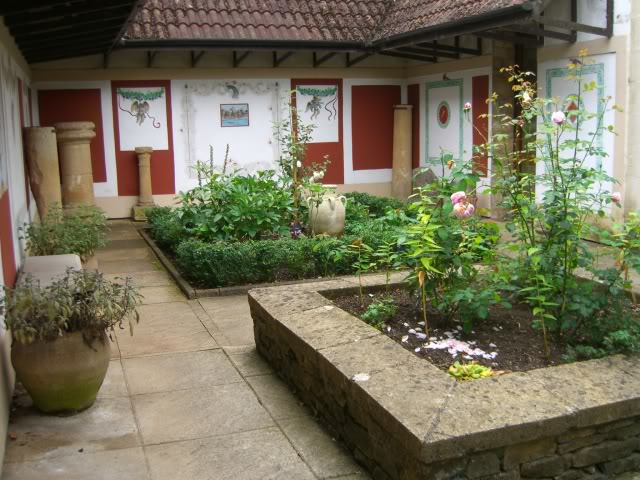

 In the House of the Surgeon in Pompeii can be found an example of a Roman garden that, although small, served a purpose: it provided vegetables and herbs for the household.
In the House of the Surgeon in Pompeii can be found an example of a Roman garden that, although small, served a purpose: it provided vegetables and herbs for the household.
Gardens in Roman times were not reserved for the wealthy. Even the "ordinary" citizen could have, at the back of his home, however small, a "hortus" which provided him with vegetables. As apartment buildings became more popular, however, a garden was no longer possible. Window boxes, even roof gardens, replaced the hortus.
Herb-growing was popular,for culinary and, probably, for medicinal reasons. In the 5th century B.C., Hippocrates, the famous Greek physician, listed approximately 400 herbs in common use andaround 65 A.D., Pedanius Dioscorides, a Greek physician serving with the Roman army, wrote "De Materia Medica," in which he described the medicinal uses of many herbs.
With the coming of the peristyle (an open space enclosed by a colonnade) the garden now became an ornamental space, for relaxation and entertaining. The reconstructed garden in the House of the Vettii, Pompeii, contains statues, fountains, tables set in their original positions based on traces left by plant roots.
Formal flower beds edged with low shrubs or box surrounded the pathways of these ornamental gardens.
Pliny the Younger in his Garden letters writes " Having passed through these manifold winding alleys, the path resumes a straight course, and at the same time divides into several tracks, separated by box hedges."
At Cirencester Museum), there is a pretty garden that shows what a small Roman garden would have looked like. It is a place of peaceful tranquility and must have offered members of the family a refuge from urban life.
The garden is planted with the flowers and shrubs the Romans would have grown, based on archaeological evidence, and on ancient writings. These include roses, amaranths, lilies,anemones, crocuses, myrtle, gladioli and narcissi.

Maryemm